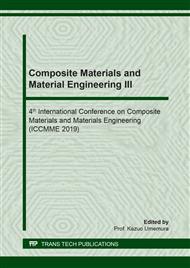p.239
p.245
p.251
p.258
p.264
p.270
p.276
p.285
p.292
Effect of Melt Temperature on Weld Line Strength
Abstract:
This article deals with the influence of the melt temperature on weld line strength in injection-molded plastic parts. A special mold was created for this investigation to make specimens with a central weld line. The experimental material was polypropylene Sabic PP 90910. Its stress at break is around 16 MPa and its melting temperature is between 200°C and 260°C. In general, the presence of weld lines has a negative impact on mechanical properties. This investigation showed that the strength depends on the melt temperature (160–260°C in this case). Strength was measured using mechanical testing. It was found to increase with the melt temperature, up to 210°C. Above 210°C, degradation of the plastic led to decreasing strengths. A melt temperature range of 190–210°C is therefore optimal for this application. Shear forces and friction were found to play a great role, as they raise the melt temperature during molding. This was confirmed by mold-flow analysis. The melt temperature during molding was up to 18% higher than the initial melt temperature. This investigation has important consequences for the plastic industry. It is relevant to evaluations of the polymer matrix strength in composite materials and the strength of 3D printed parts with multiple weld lines.
Info:
Periodical:
Pages:
264-269
Citation:
Online since:
May 2019
Authors:
Keywords:
Price:
Сopyright:
© 2019 Trans Tech Publications Ltd. All Rights Reserved
Share:
Citation:


